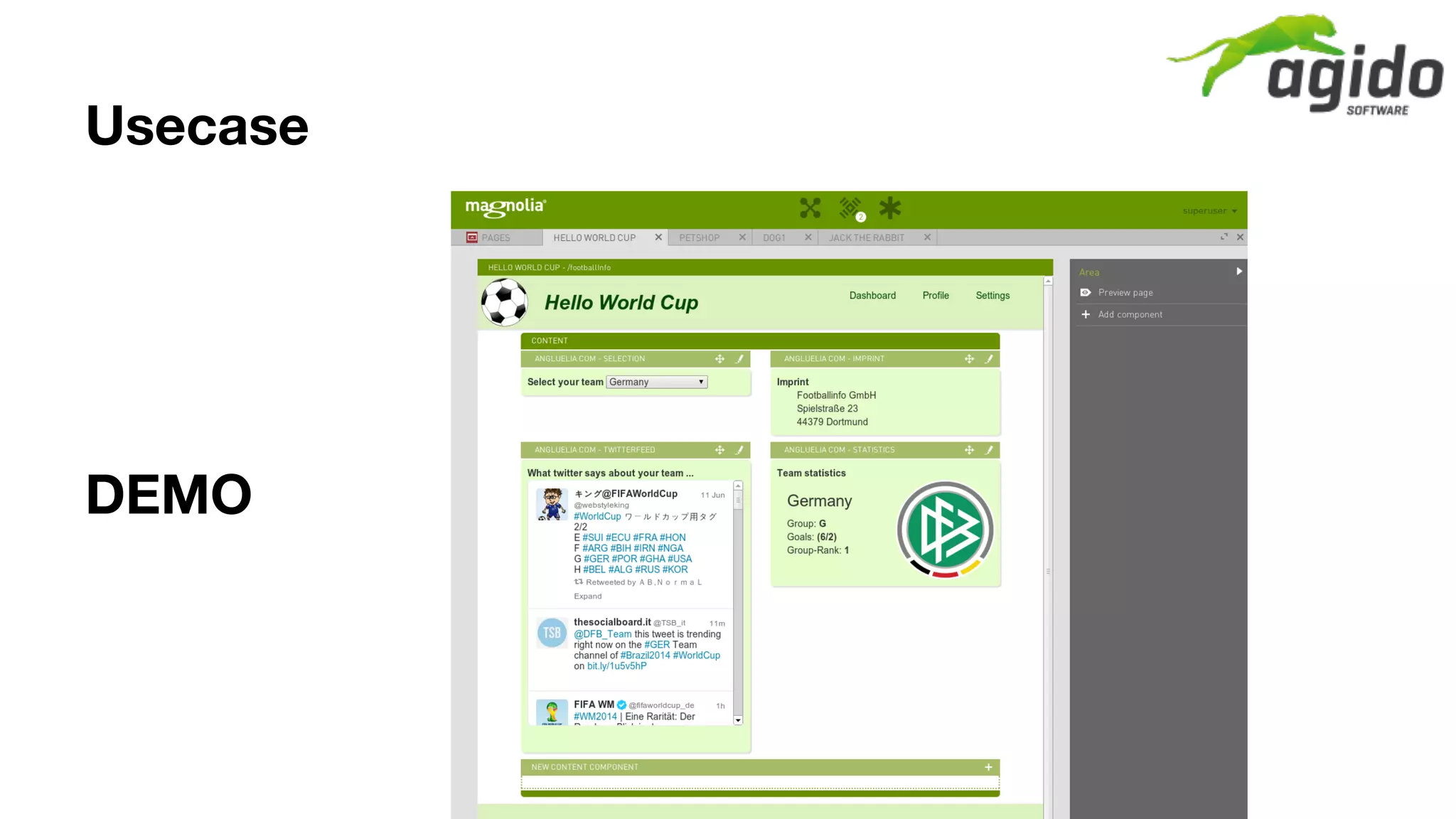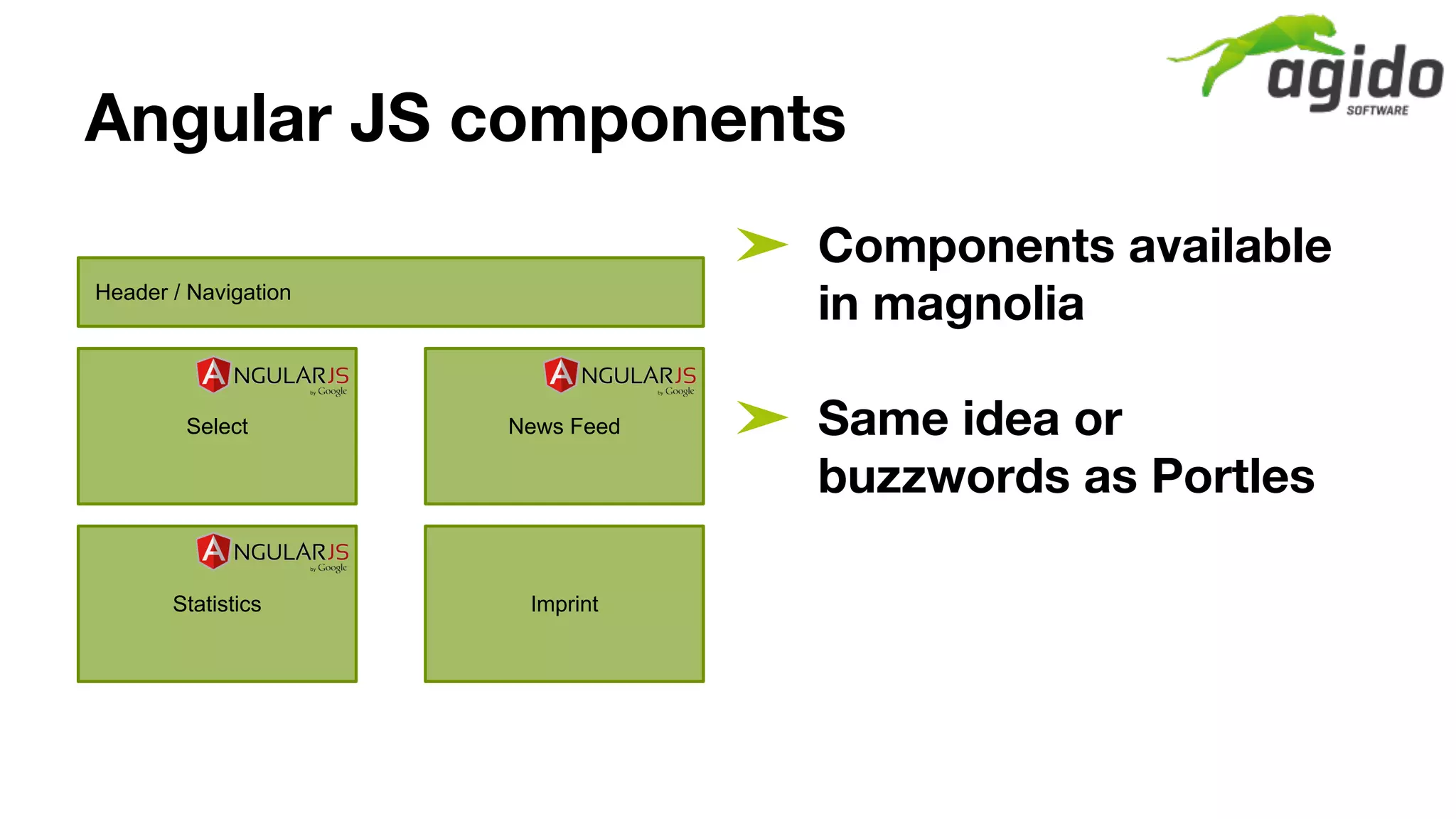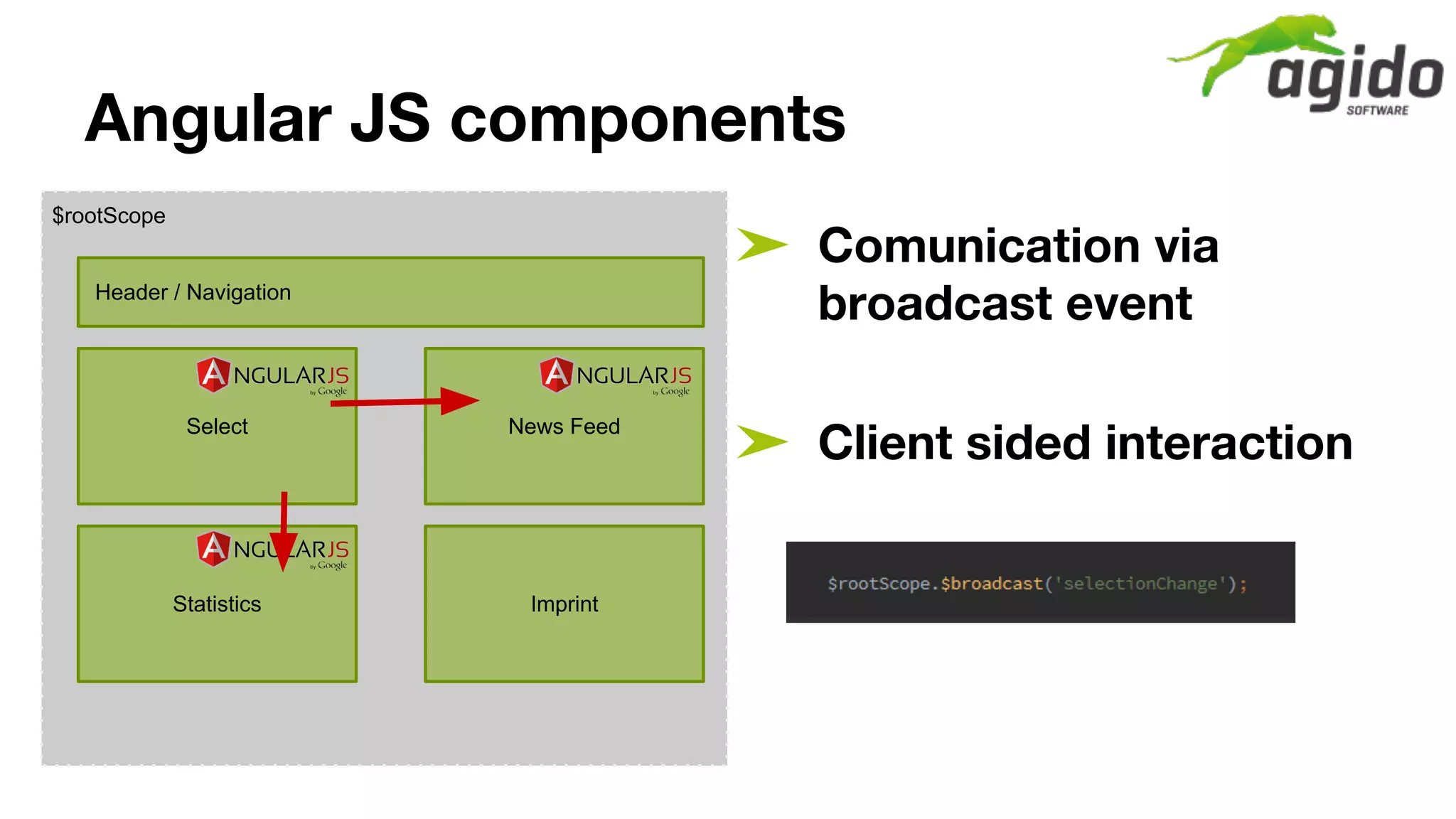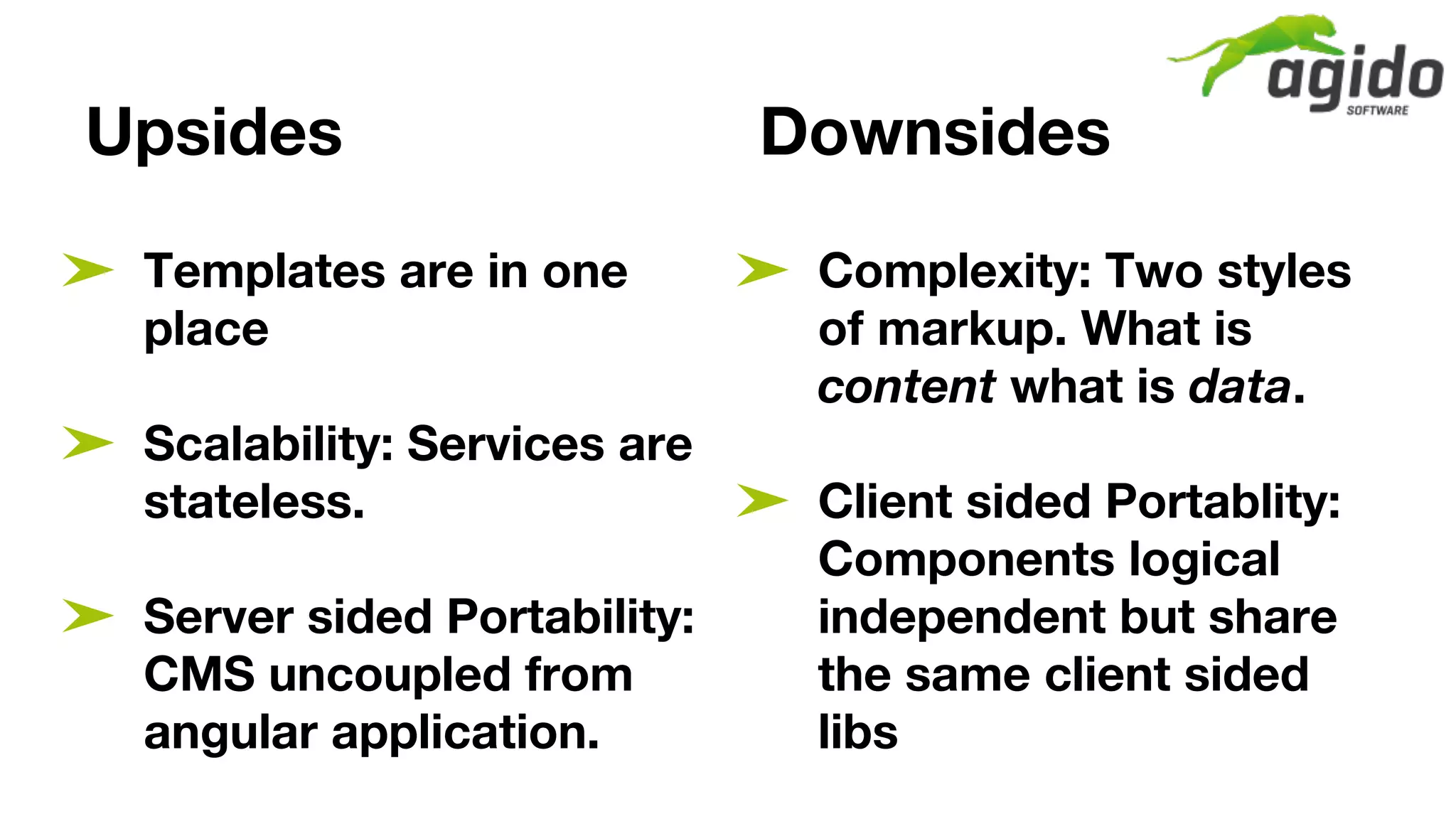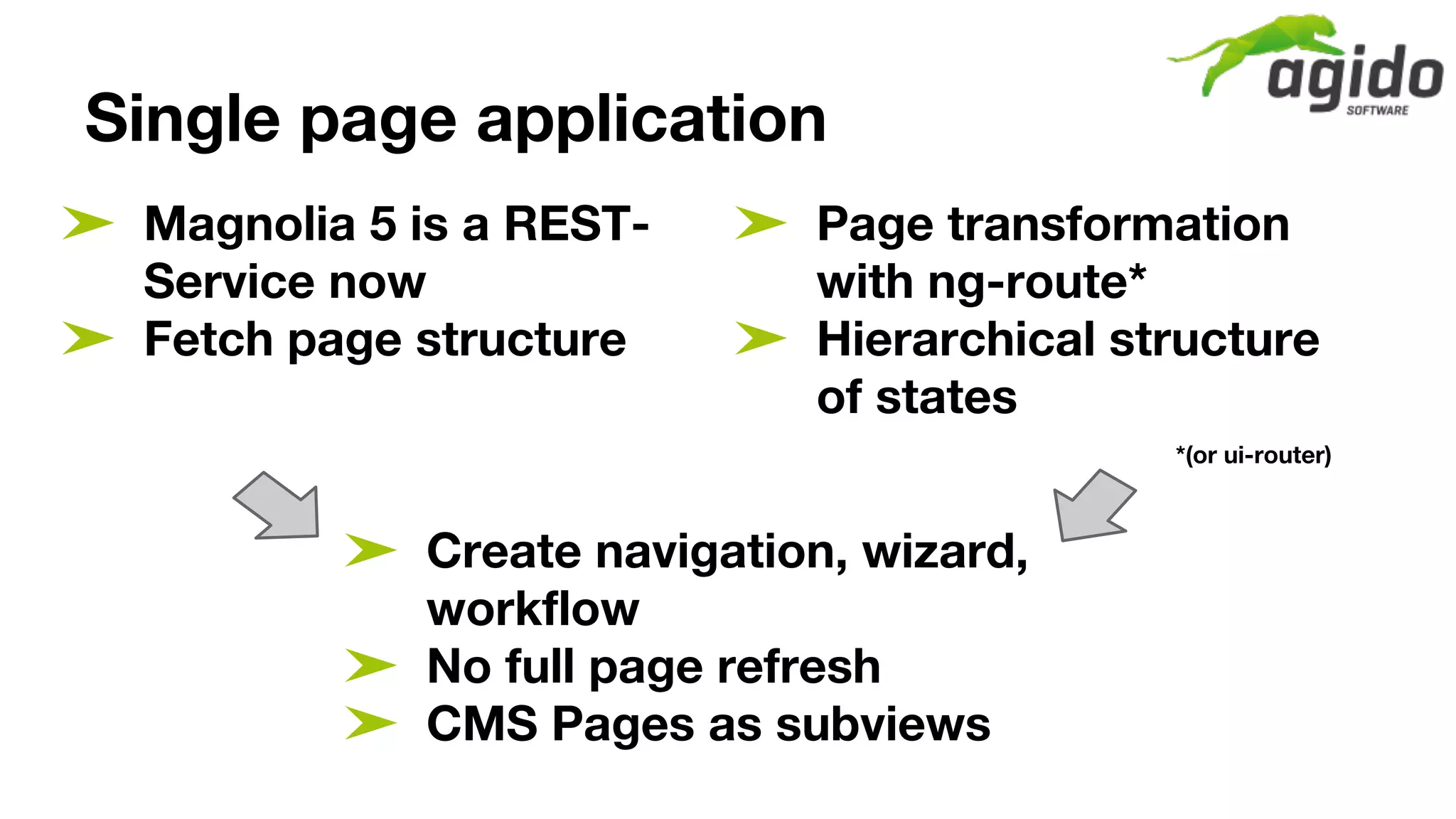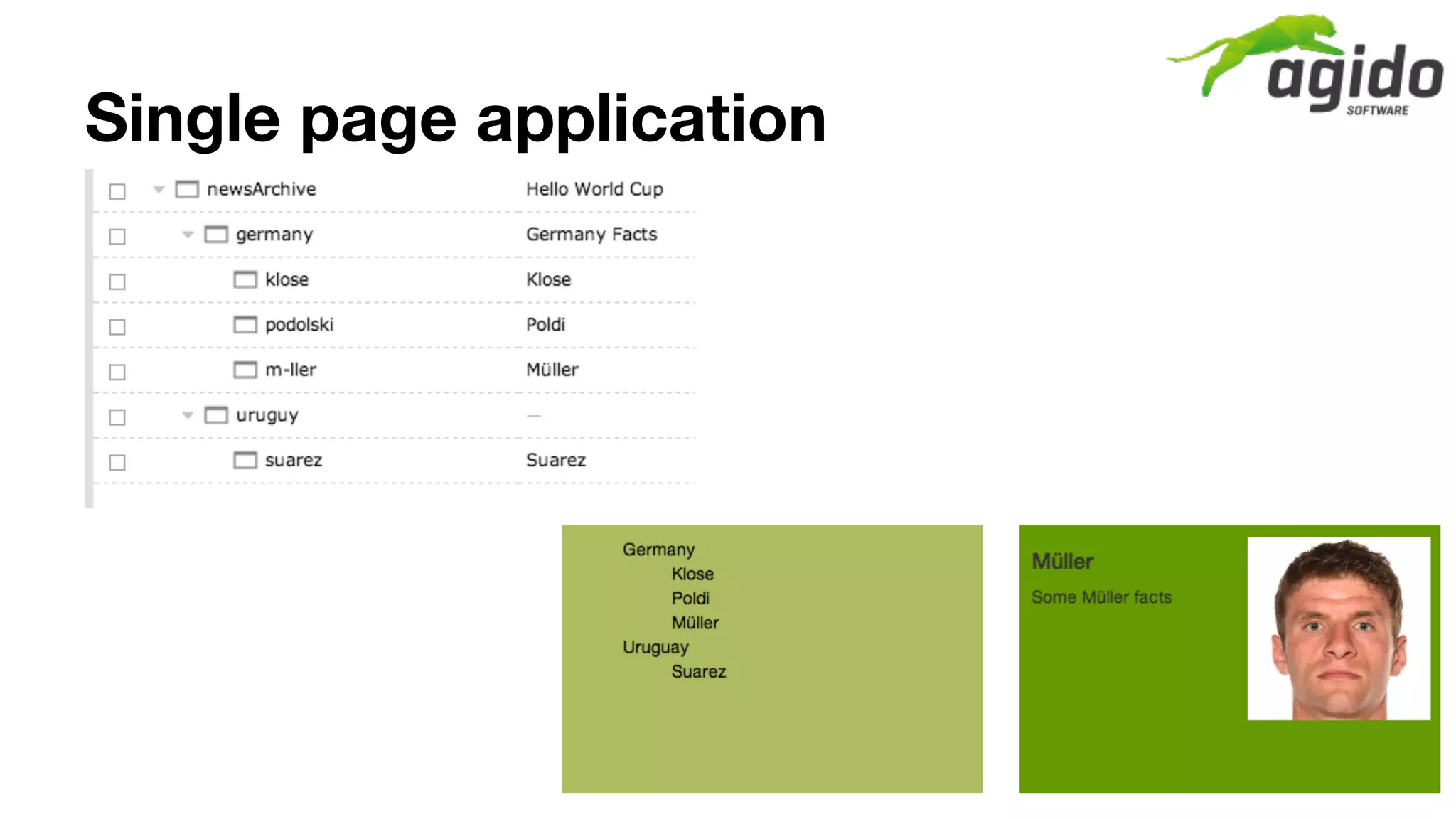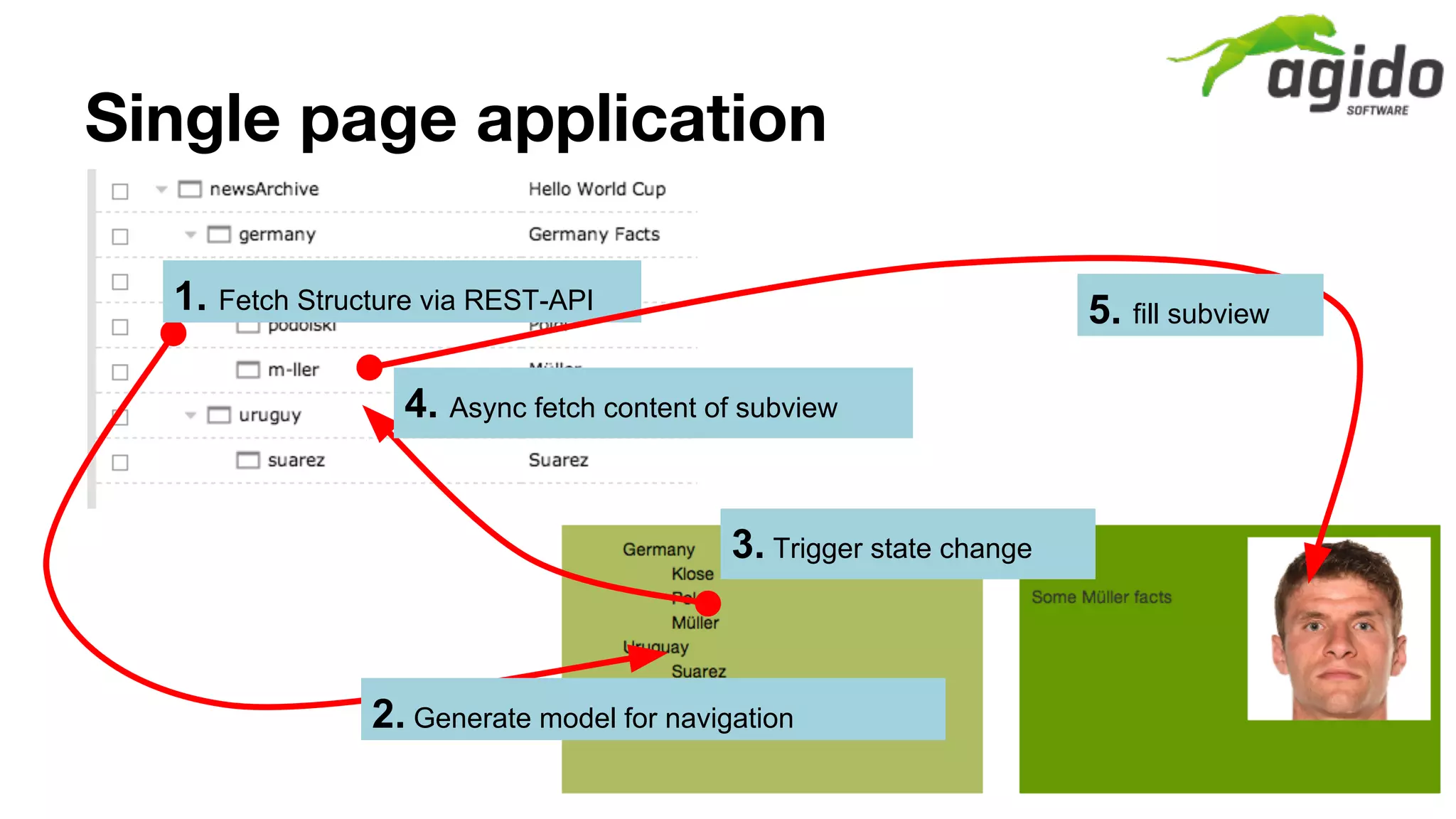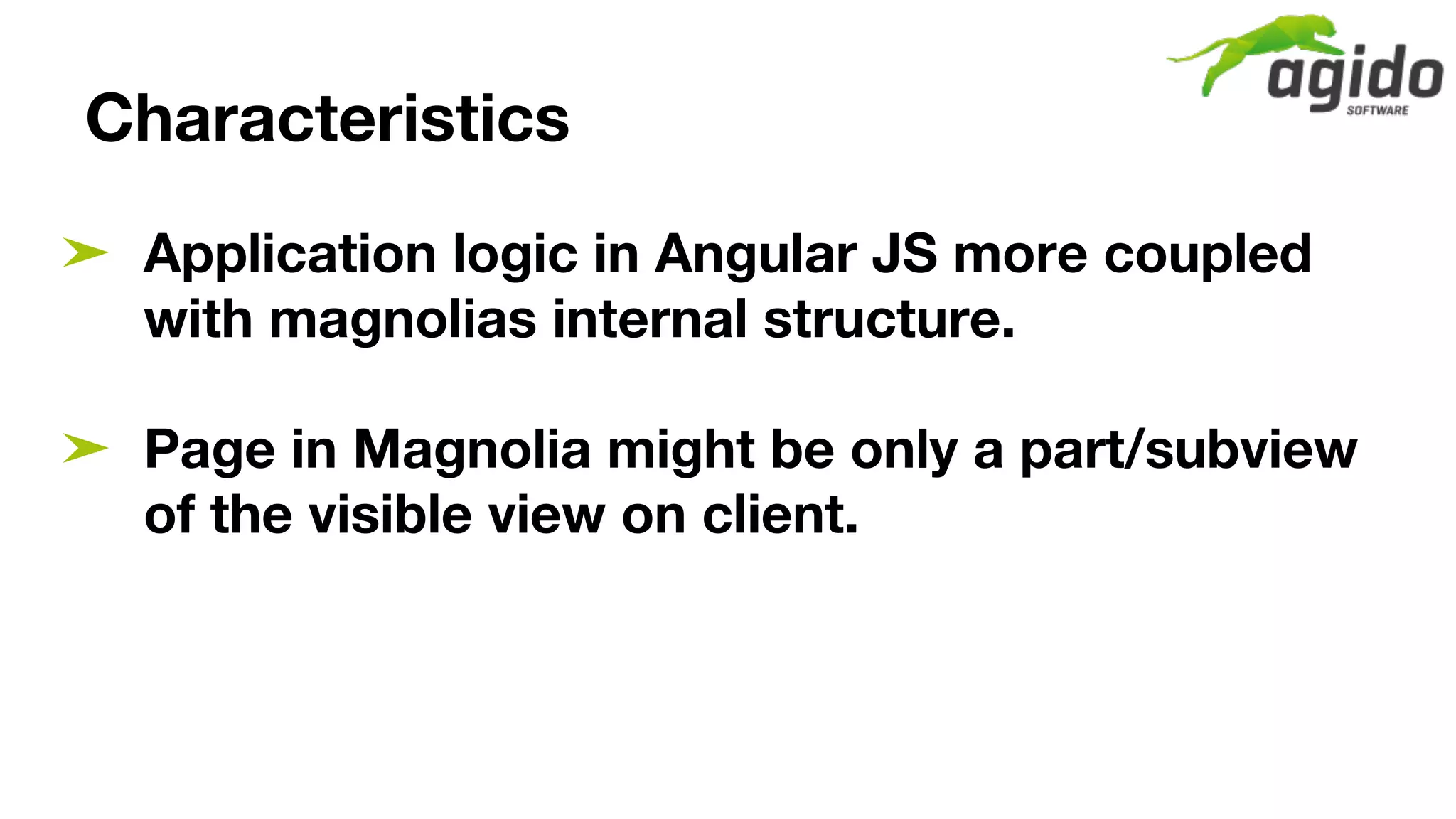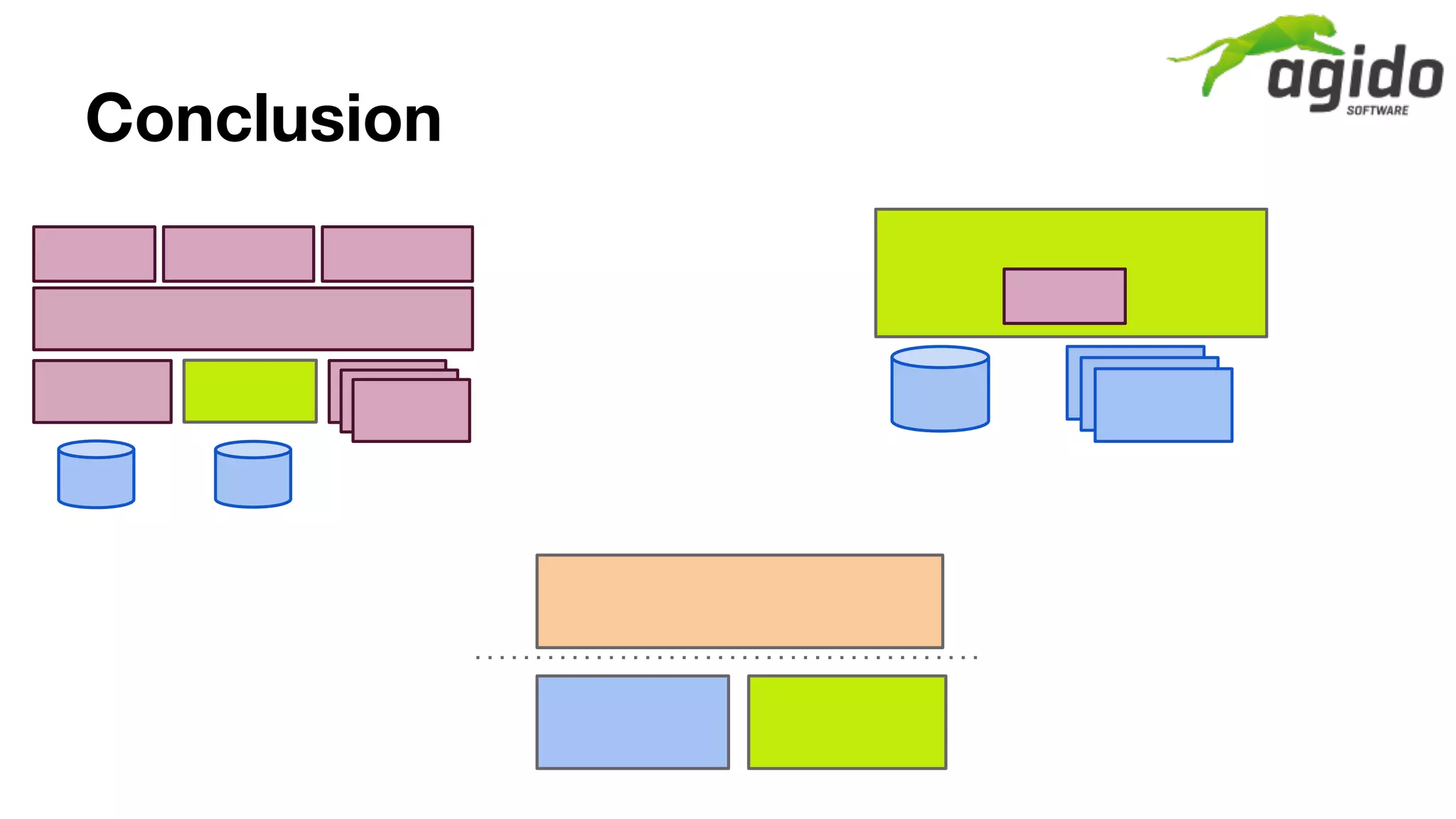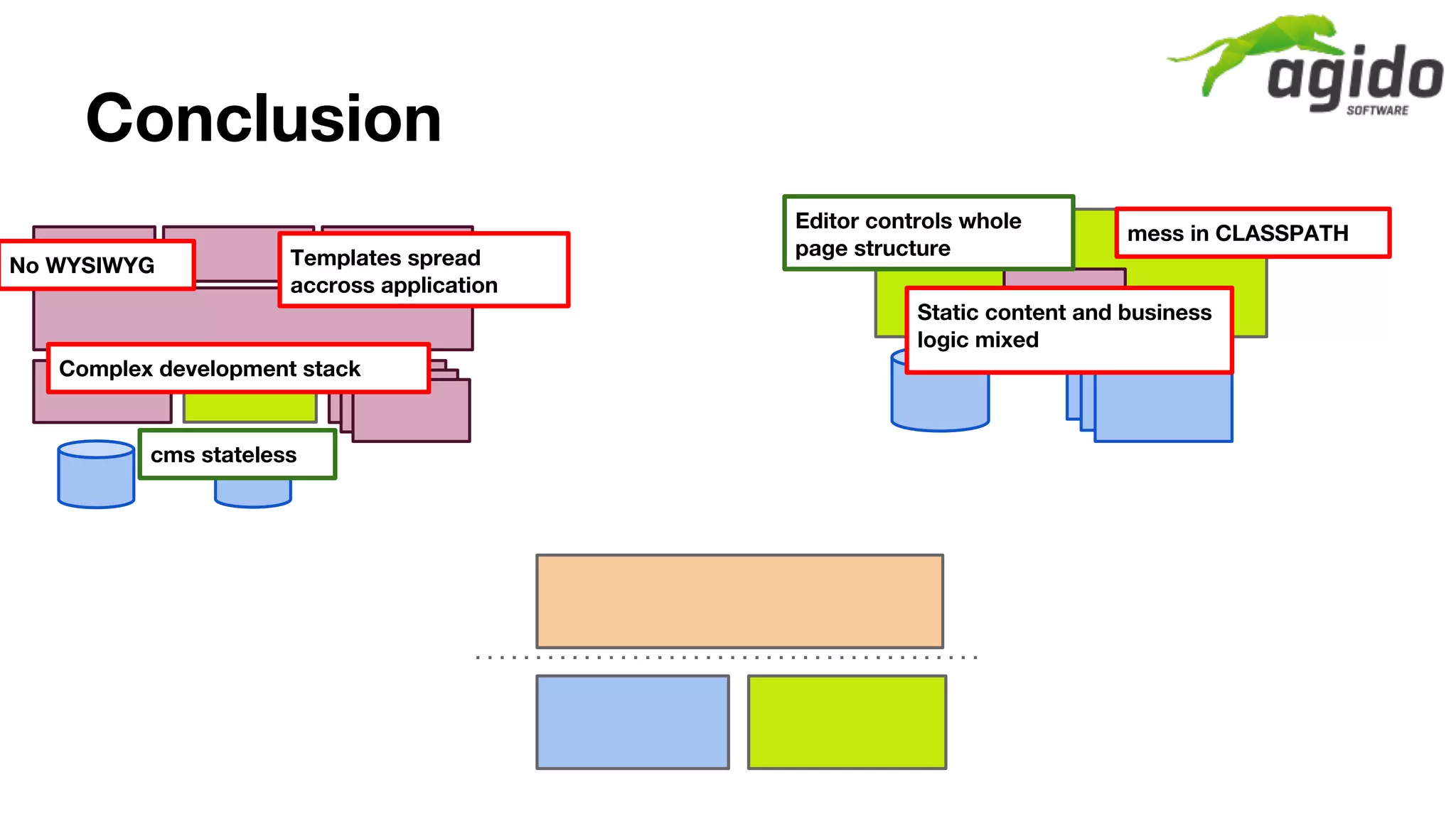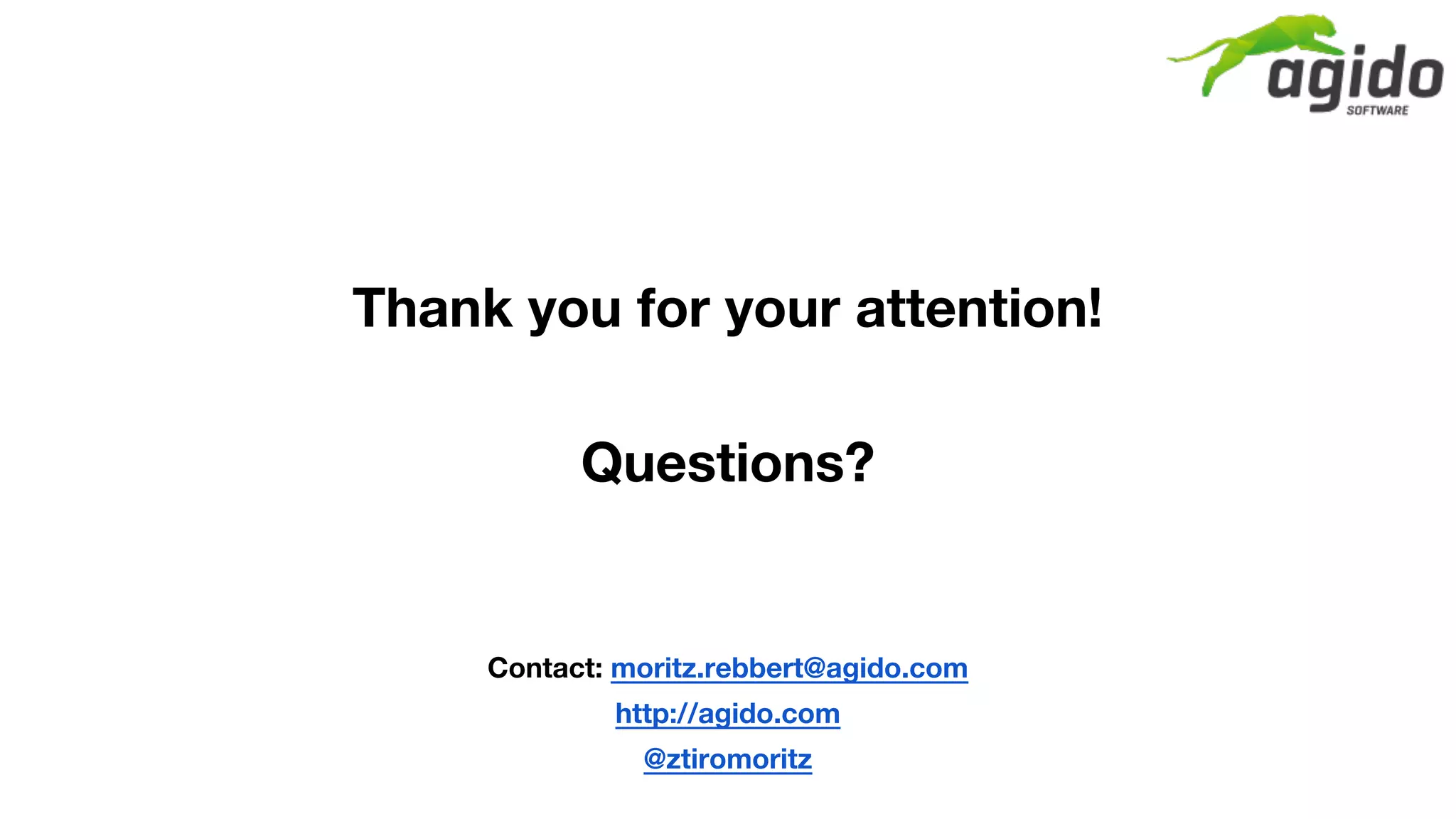Moritz Rebbert discusses the development of a large multi-tier application and a CMS-based portal utilizing AngularJS components and single-page applications. The presentation highlights the challenges faced with multi-tier architectures, the importance of customer control over structure, and the evolution towards rich client-side applications. Key lessons include the flexibility of Magnolia as an isolated part and the complexity introduced by integrating different markup styles.
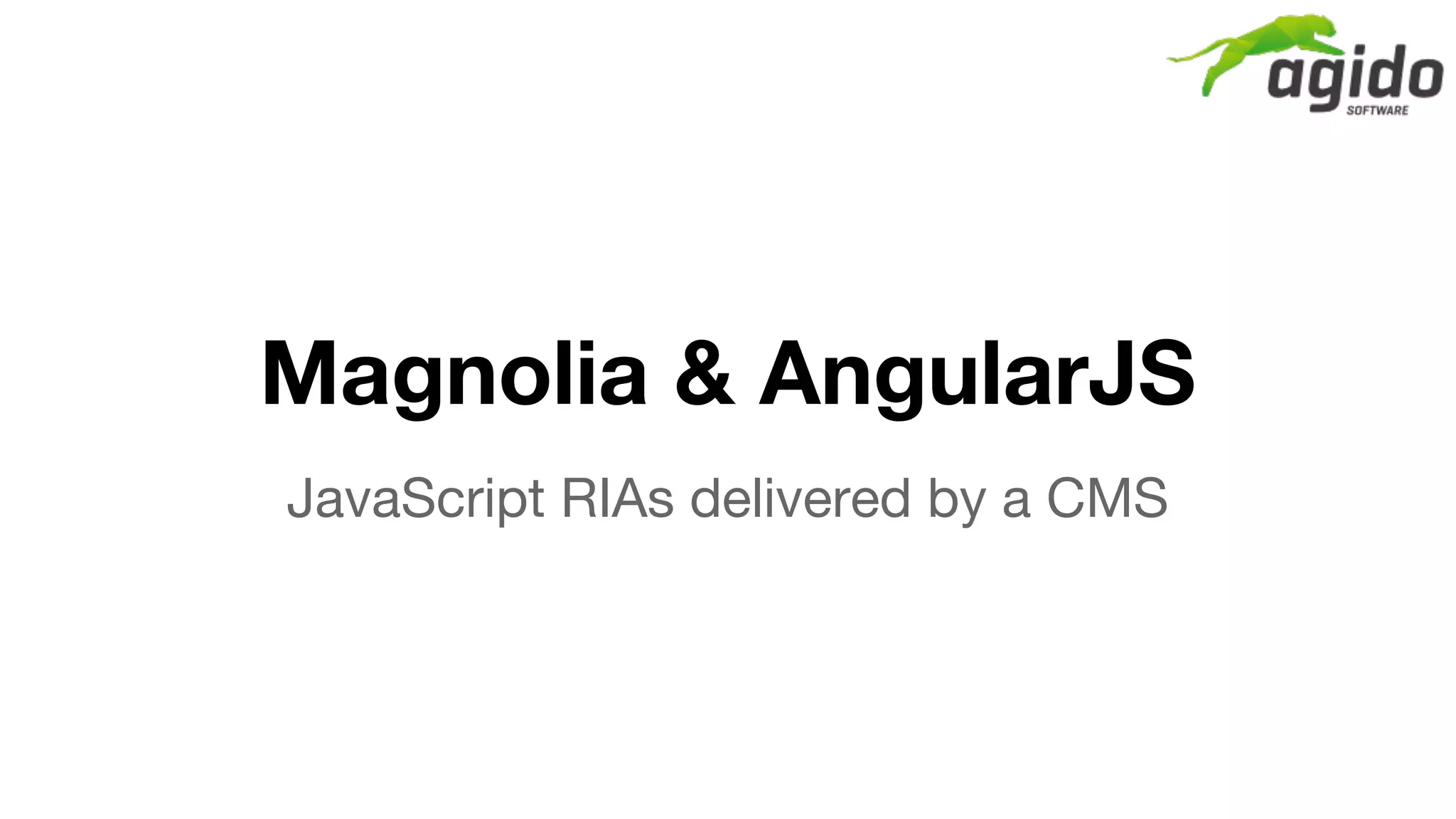
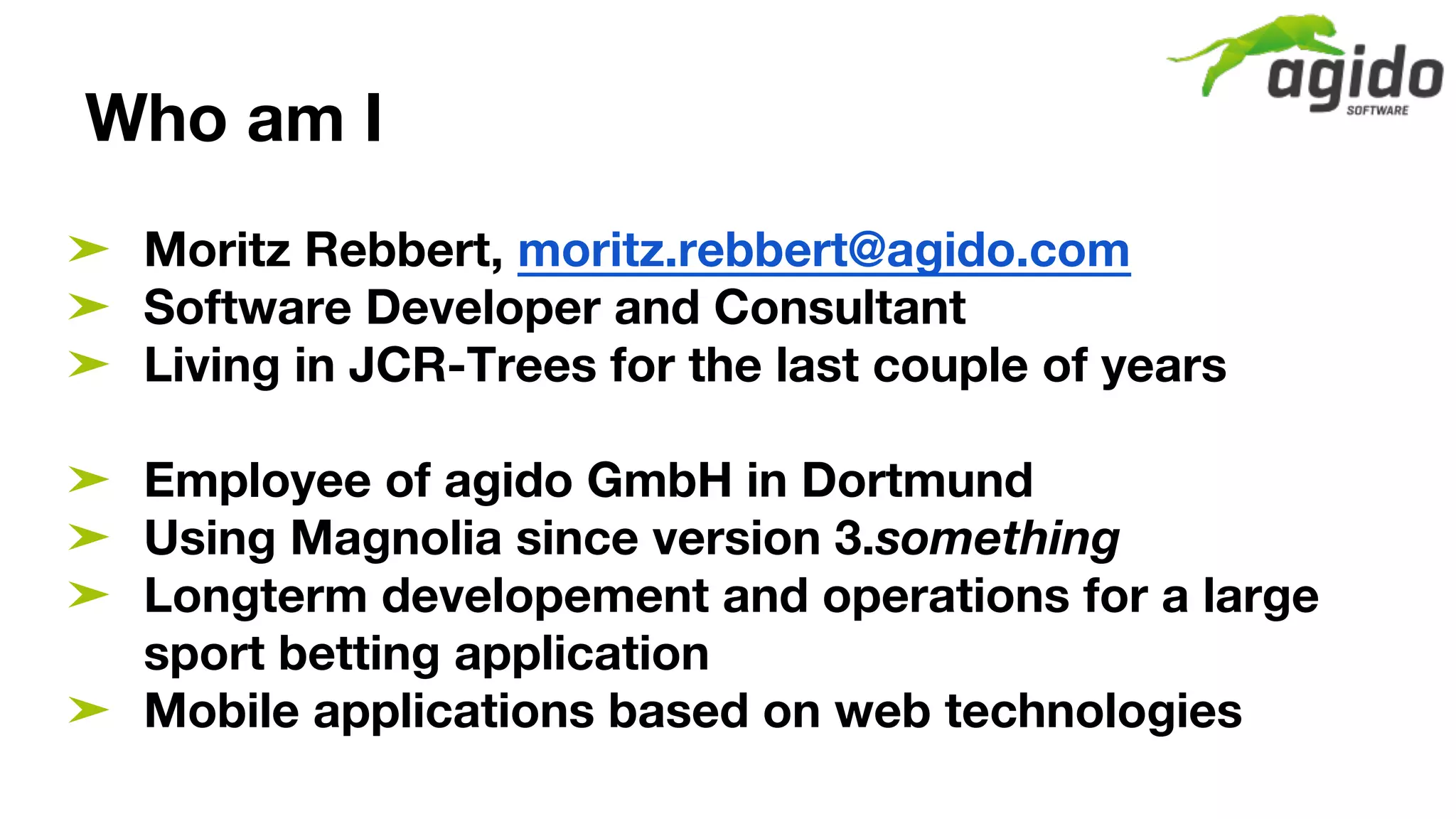

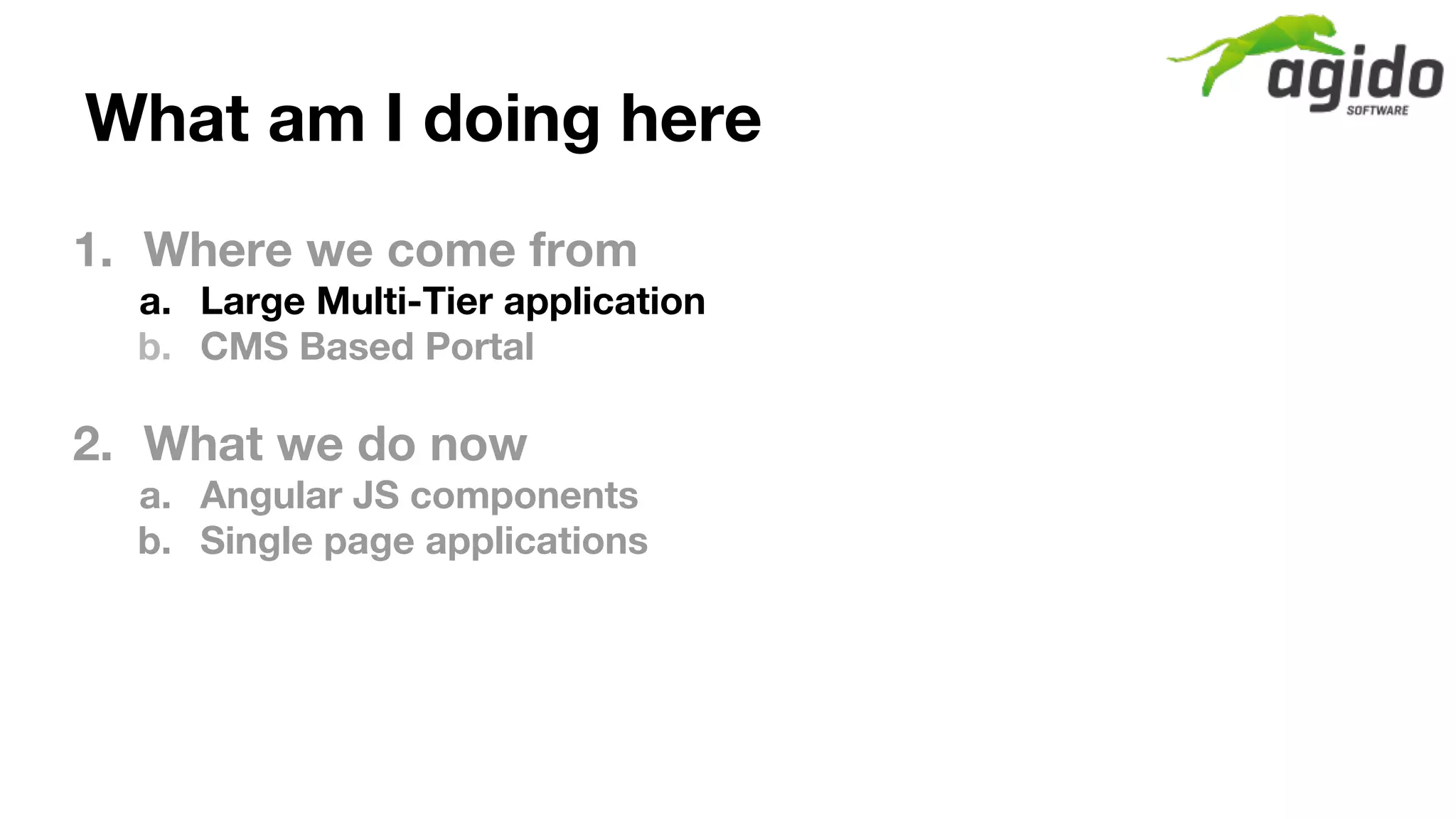
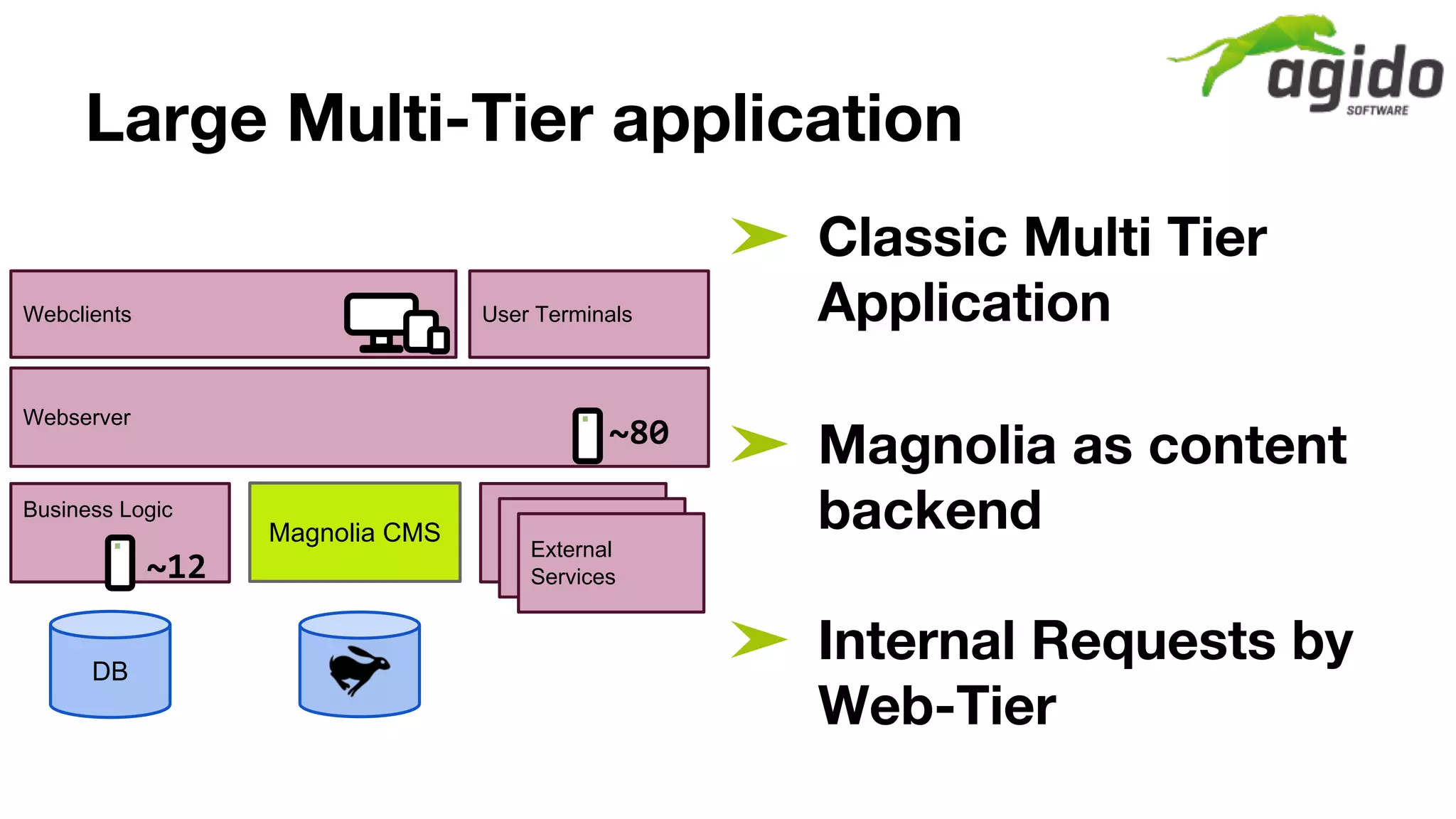
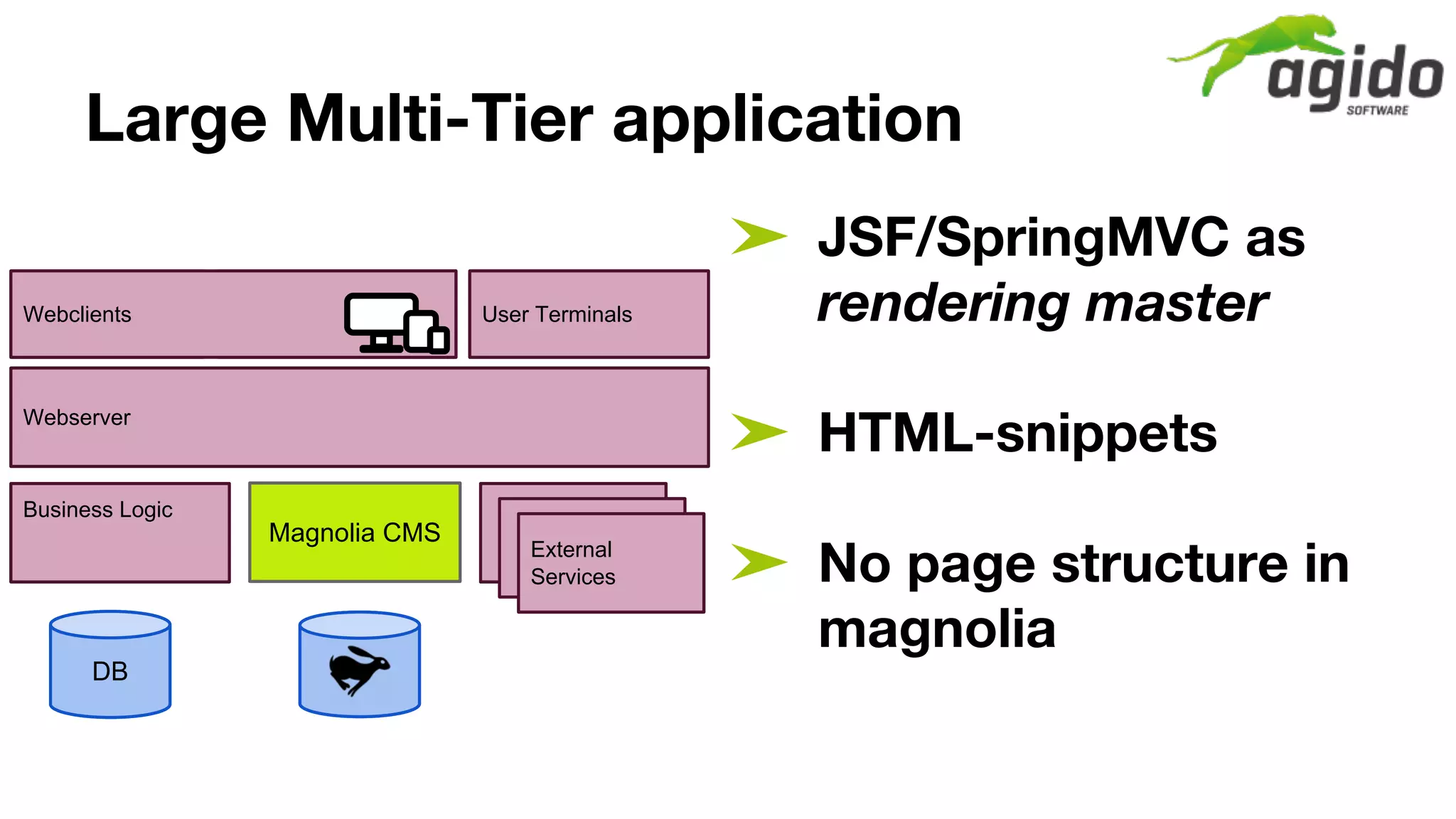
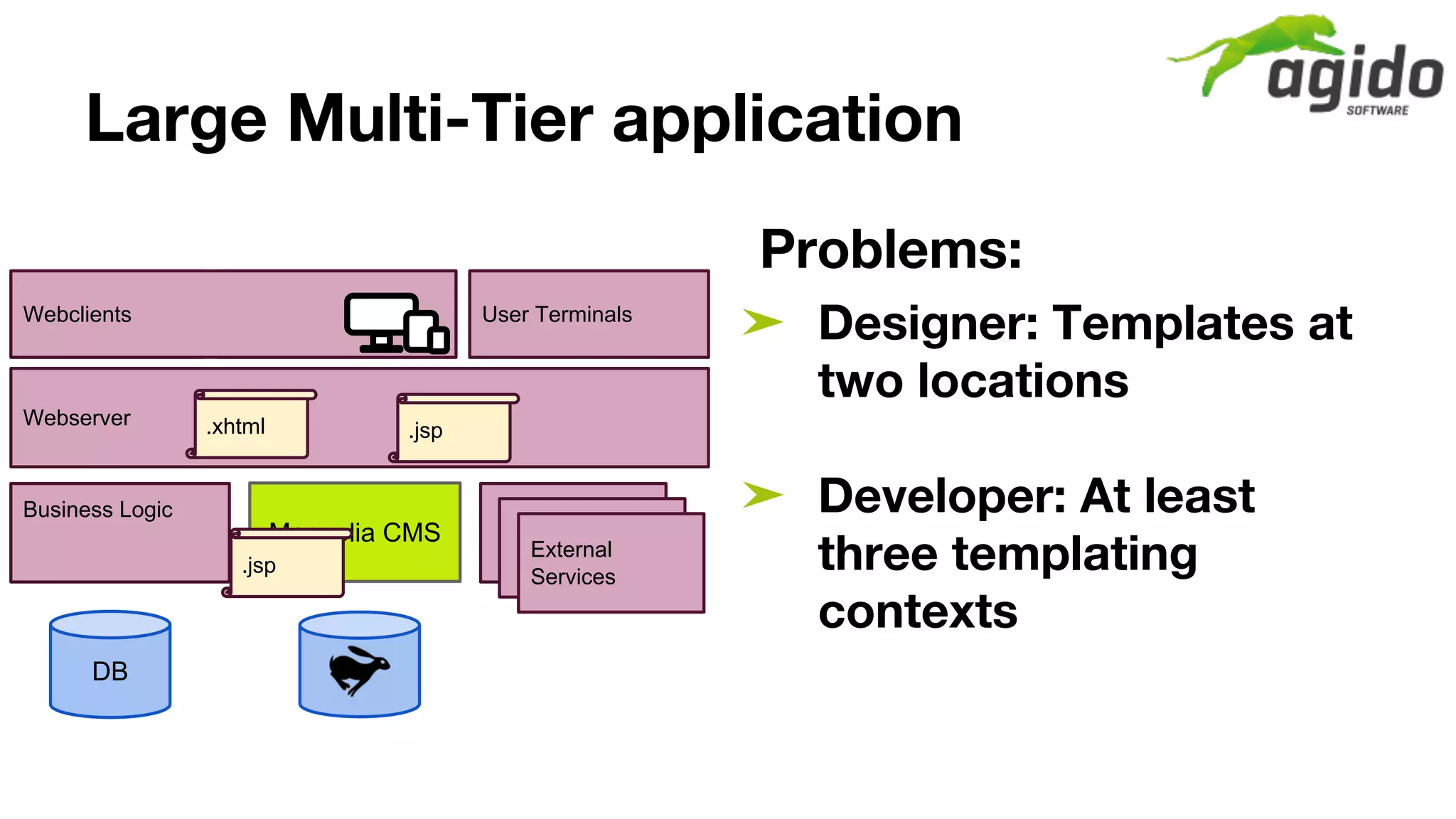
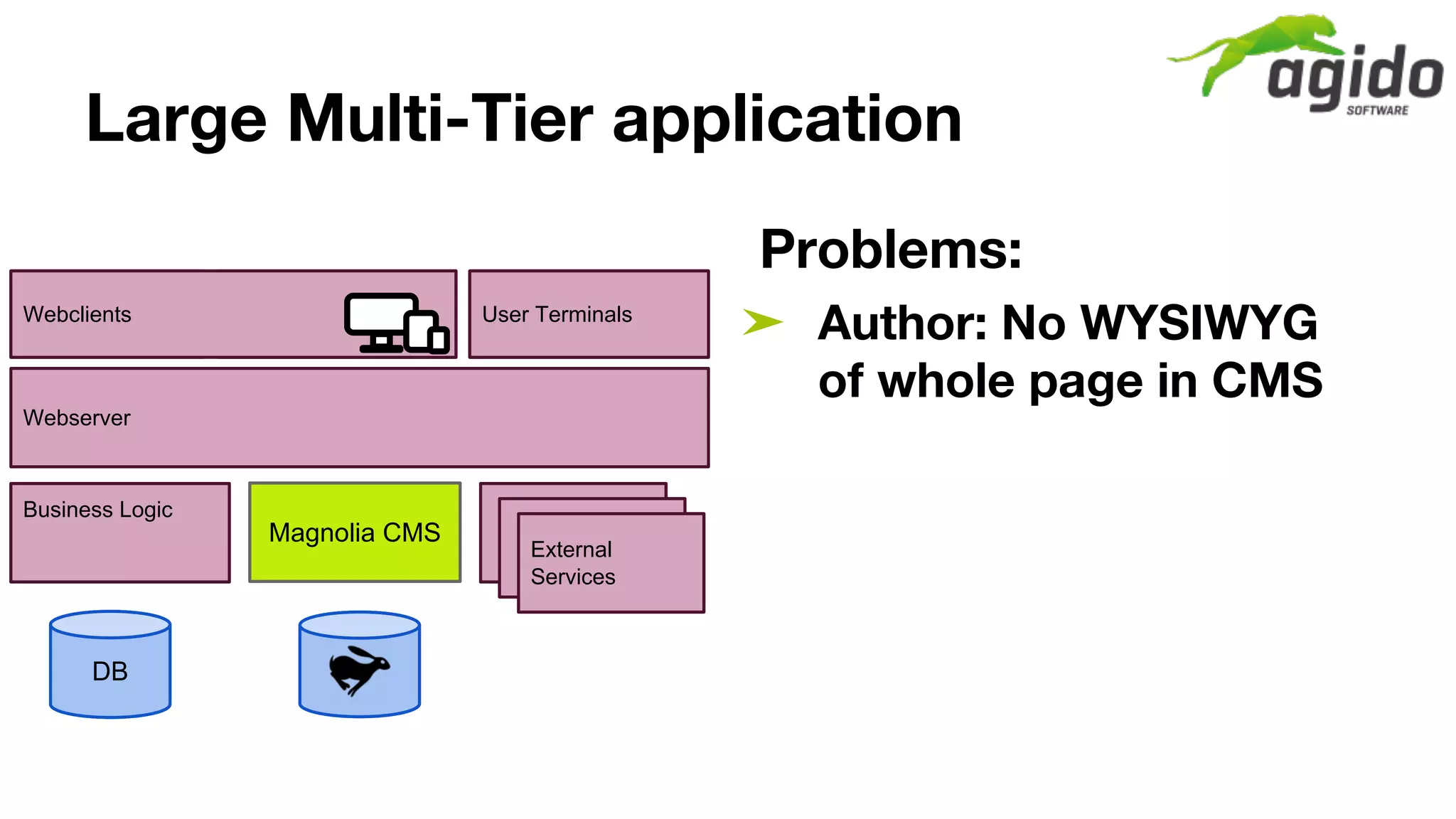
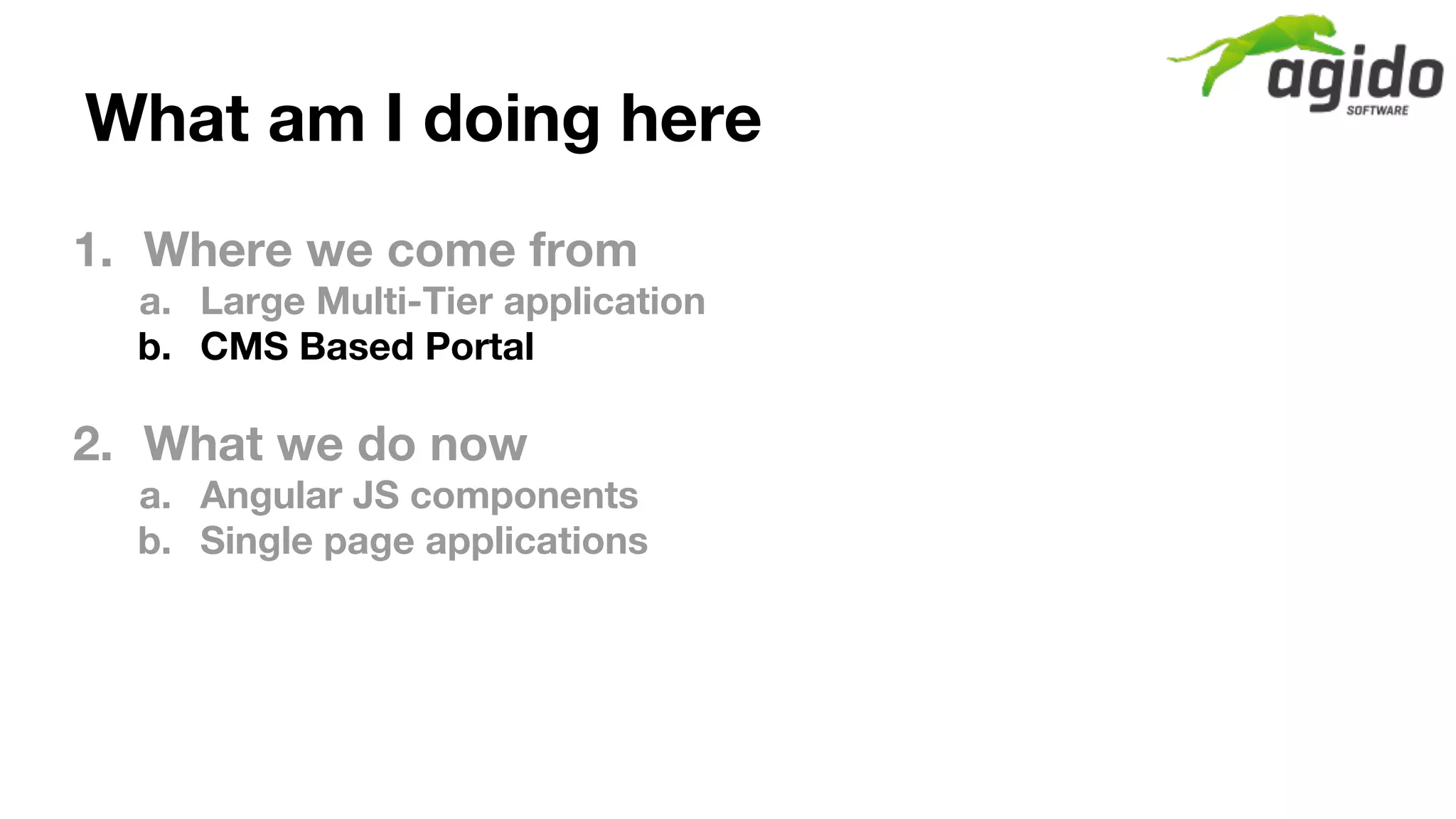
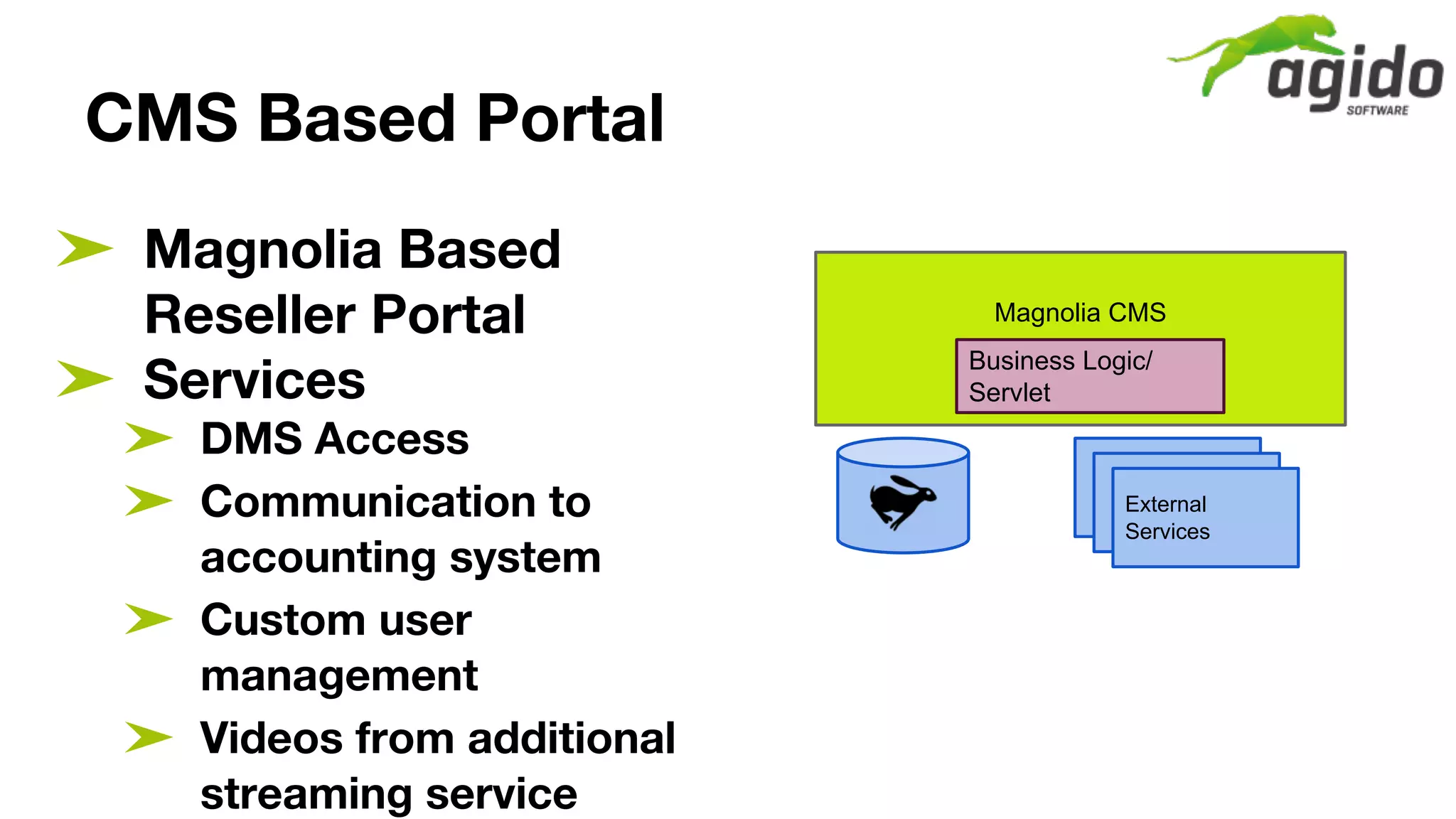

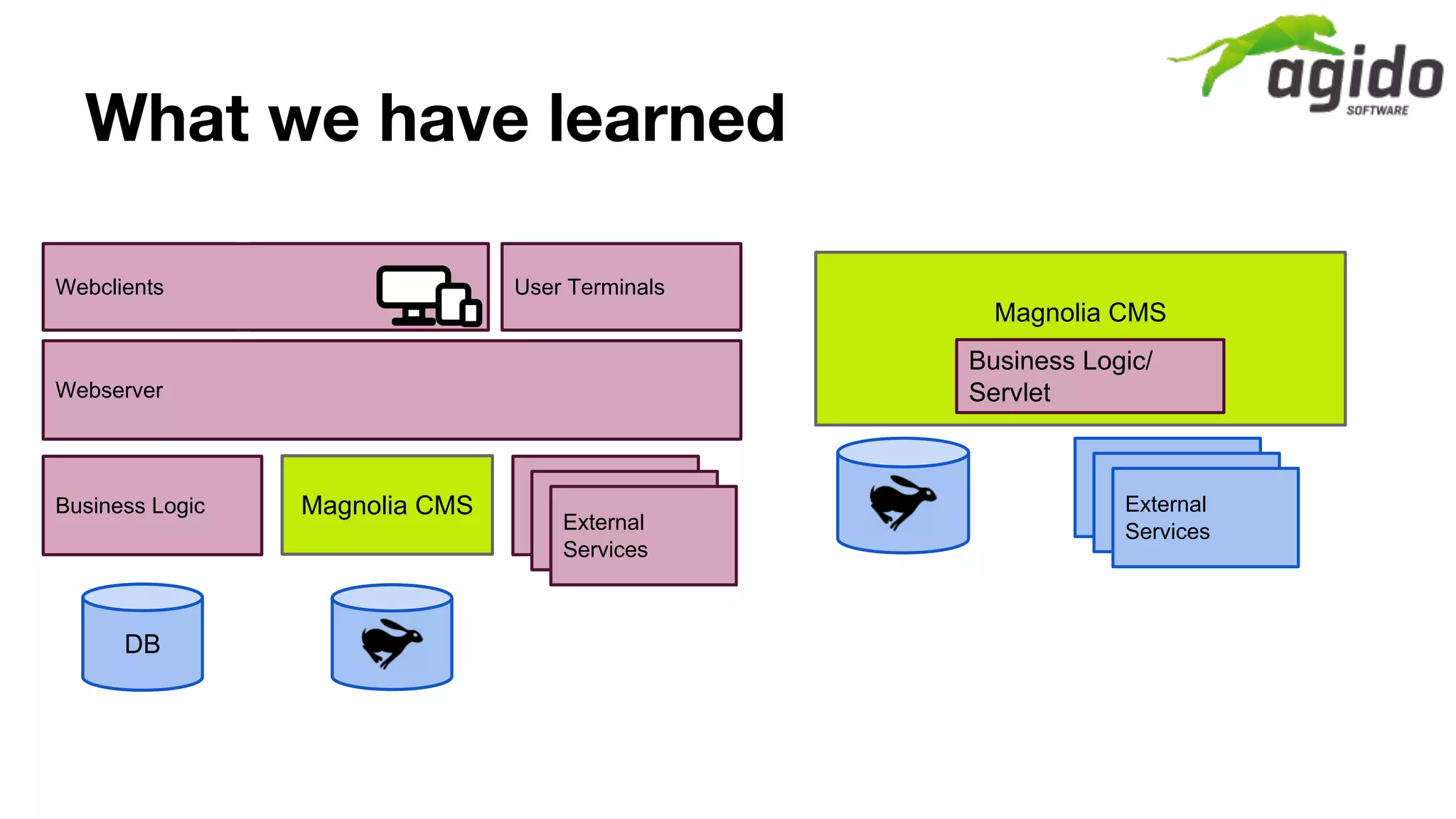
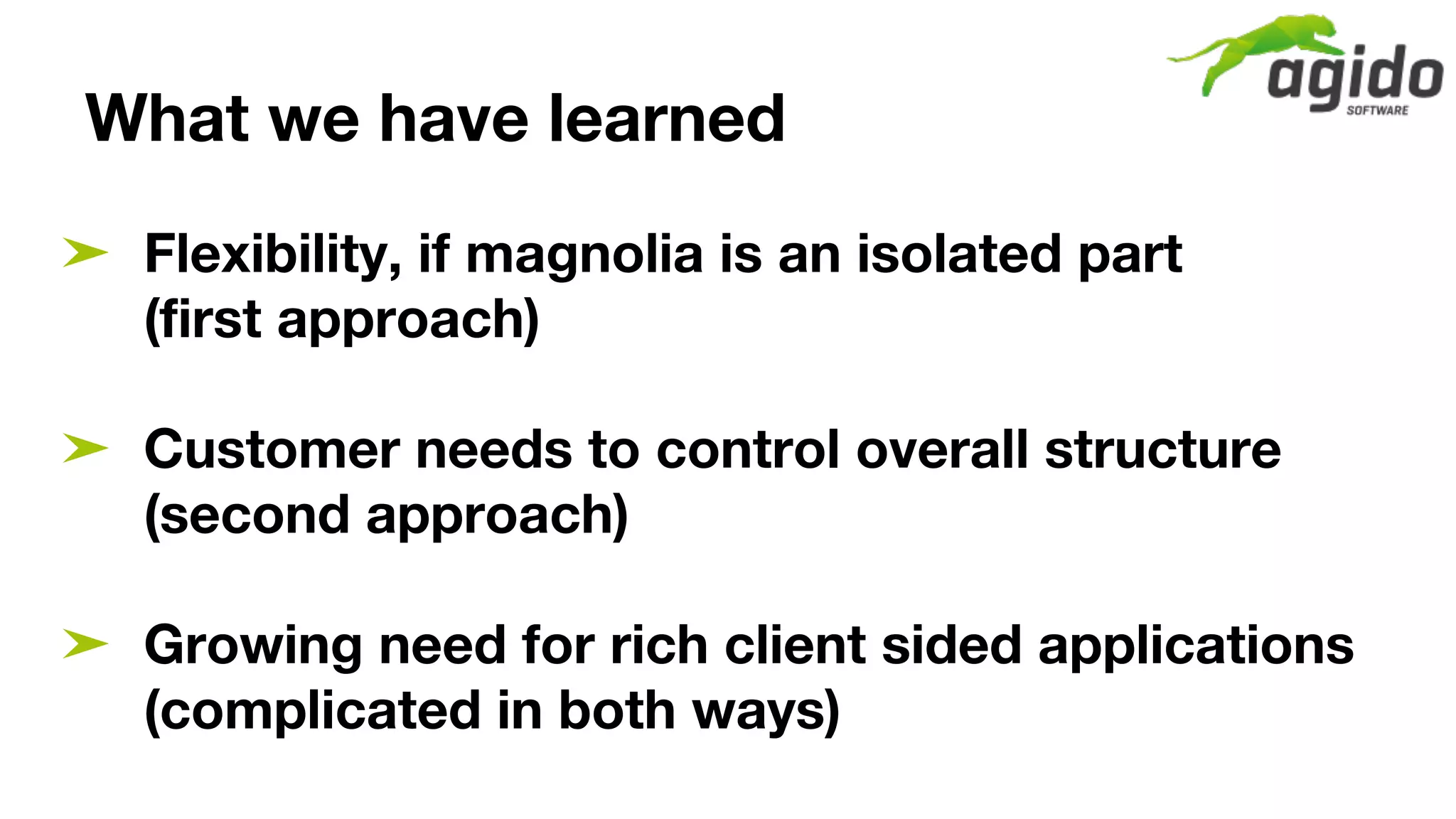

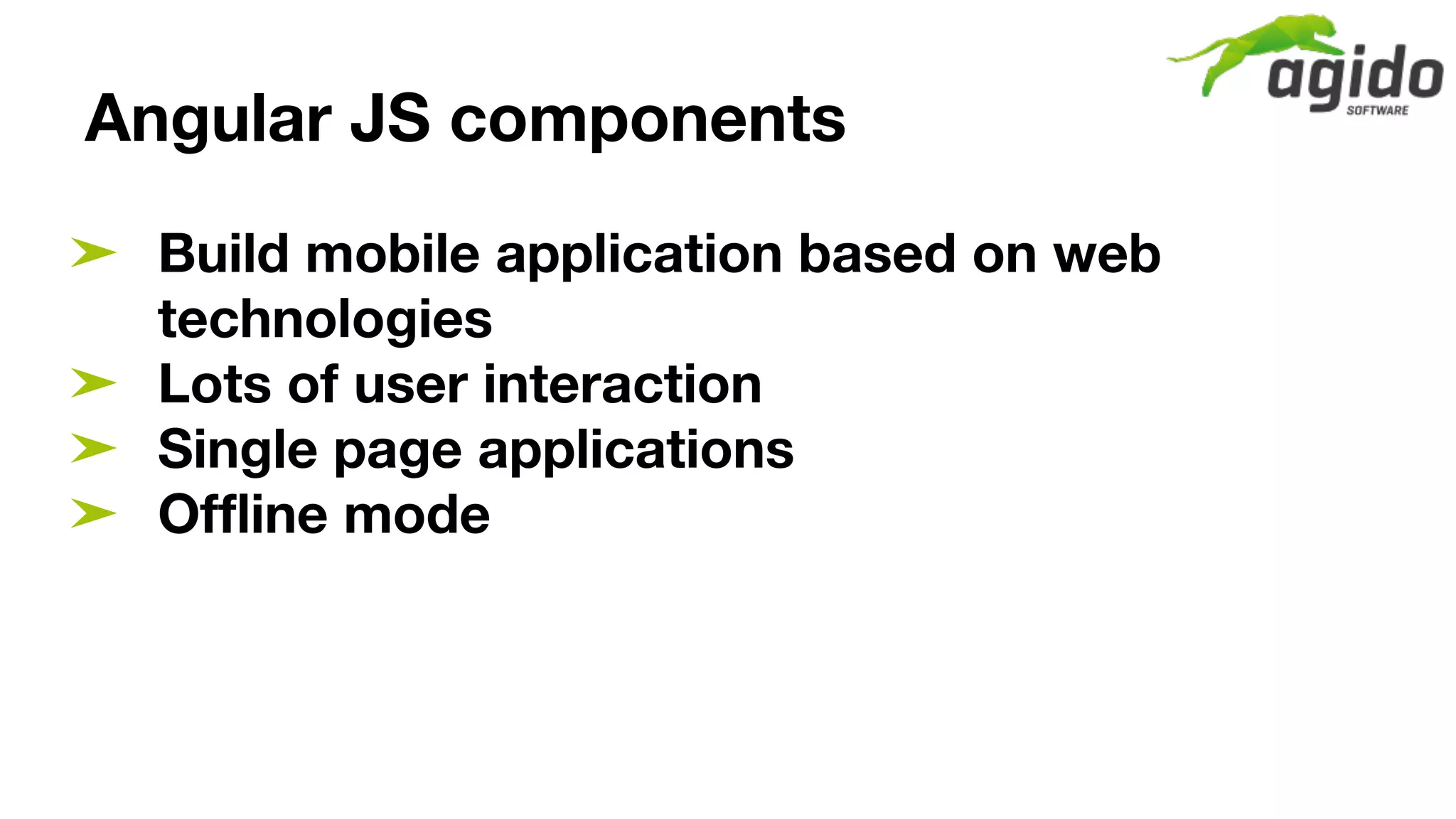

![Angular JS components <div data-ng-app="app"> <h3>Angular Demo</h3> <div data-ng-controller="CopyController"> <input type="text" data-ng-model="data"></input> {{data}} </div> <div data-ng-controller="TwoTimesController"> <input type="text" data-ng-model="data"></input> {{data * 2}} </div> </div> var add = angular.module('app',[]); function CopyController ($scope){ $scope.data = 13; }; function TwoTimesController($scope){ $scope.data = 7; }; ➤ Plain HTML5 enriched with custom attributes and tags](https://image.slidesharecdn.com/magnoliaangularjsmoritzrebbertagido-140717075803-phpapp01/75/Magnolia-Angular-JS-an-Approach-for-Javascript-RIAs-Delivered-by-a-CMS-17-2048.jpg)
![Angular JS components <div data-ng-app="app"> <h3>Angular Demo</h3> <div data-ng-controller="CopyController"> <input type="text" data-ng-model="data"></input> {{data}} </div> <div data-ng-controller="TwoTimesController"> <input type="text" data-ng-model="data"></input> {{data * 2}} </div> </div> var add = angular.module('app',[]); function CopyController ($scope){ $scope.data = 13; }; function TwoTimesController($scope){ $scope.data = 7; }; ➤ Two-way-data-binding ➤ Ongoing rendering in client ➤ TWDB is a cool feature to build RIAs](https://image.slidesharecdn.com/magnoliaangularjsmoritzrebbertagido-140717075803-phpapp01/75/Magnolia-Angular-JS-an-Approach-for-Javascript-RIAs-Delivered-by-a-CMS-18-2048.jpg)
![Angular JS components <div data-ng-app="app"> <h3>Angular Demo</h3> <div data-ng-controller="CopyController"> <input type="text" data-ng-model="data"></input> {{data}} </div> <div data-ng-controller="TwoTimesController"> <input type="text" data-ng-model="data"></input> {{data * 2}} </div> </div> var add = angular.module('app',[]); function CopyController ($scope, $rootScope){ $scope.data = 13; }; function TwoTimesController($scope){ $scope.data = 7; }; ➤ data-ng-app defines root of application ➤ two or more apps per page possible](https://image.slidesharecdn.com/magnoliaangularjsmoritzrebbertagido-140717075803-phpapp01/75/Magnolia-Angular-JS-an-Approach-for-Javascript-RIAs-Delivered-by-a-CMS-19-2048.jpg)
![Angular JS components <div data-ng-app="app"> <h3>Angular Demo</h3> <div data-ng-controller="CopyController"> <input type="text" data-ng-model="data"></input> {{data}} </div> <div data-ng-controller="TwoTimesController"> <input type="text" data-ng-model="data"></input> {{data * 2}} </div> </div> var add = angular.module('app',[]); function CopyController ($scope){ $scope.data = 13; }; function TwoTimesController($scope){ $scope.data = 7; }; ➤ Devide DOM in components ➤ Each with its own $scope](https://image.slidesharecdn.com/magnoliaangularjsmoritzrebbertagido-140717075803-phpapp01/75/Magnolia-Angular-JS-an-Approach-for-Javascript-RIAs-Delivered-by-a-CMS-20-2048.jpg)
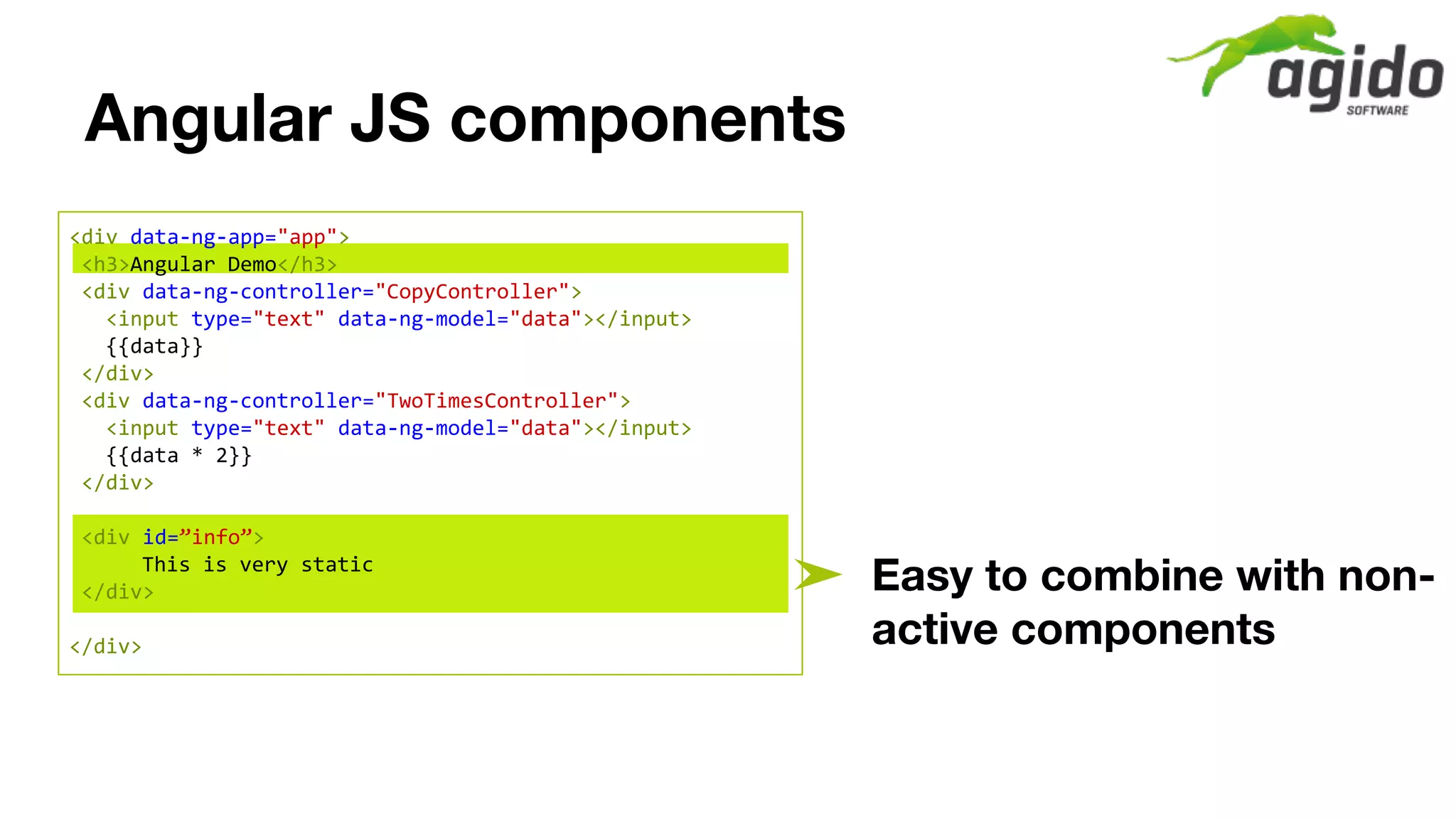

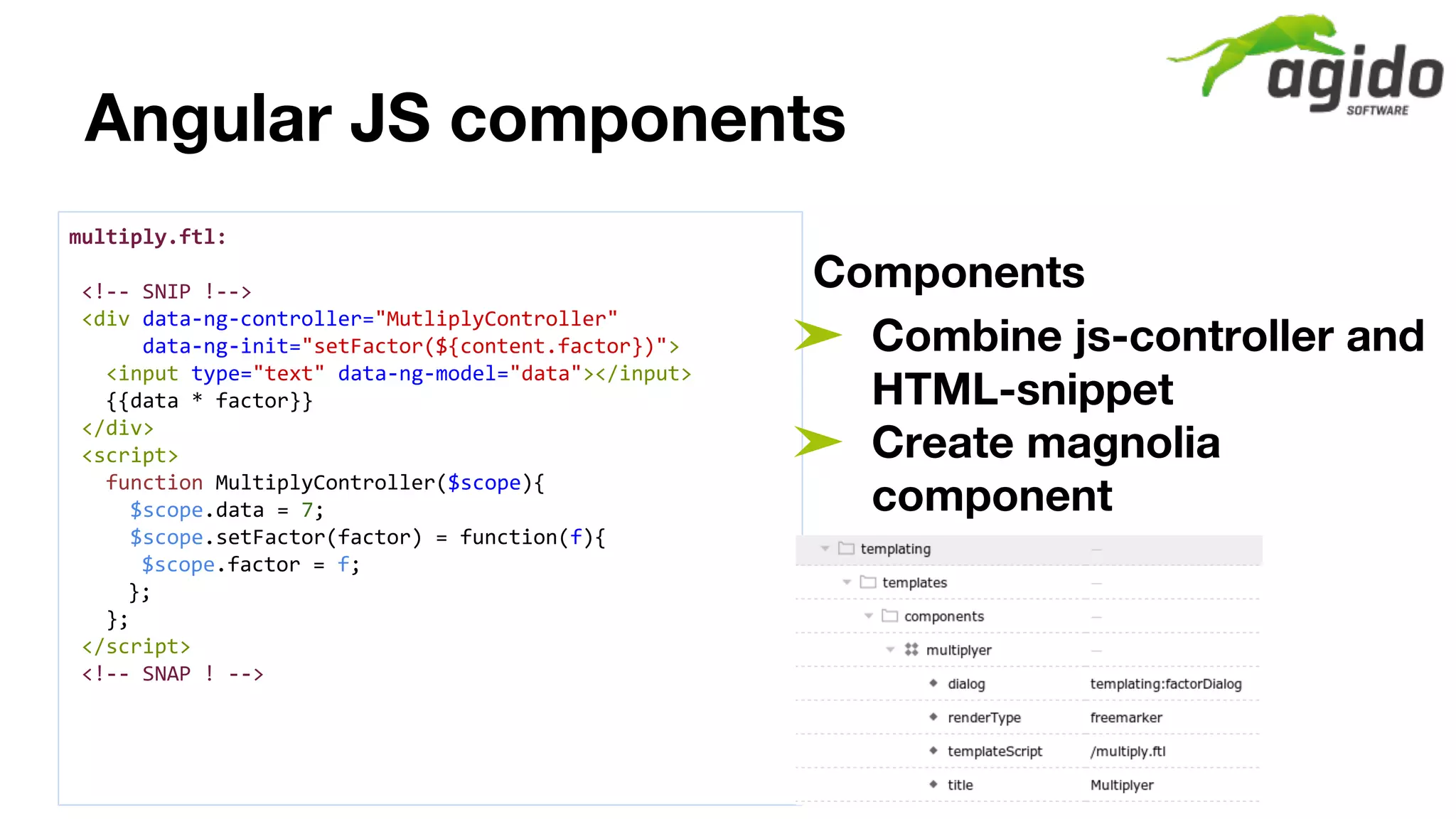
![Angular JS components page.ftl: <!DOCTYPE html> <html> <head lang="en"> [@cms.init /] <script> var add = angular.module('app',[]); </script> </head> <body data-ng-app="app"> [@cms.area name="filledWithComponents"/] </body> Frame ➤ Create surrounding page ➤ Initialize angular app](https://image.slidesharecdn.com/magnoliaangularjsmoritzrebbertagido-140717075803-phpapp01/75/Magnolia-Angular-JS-an-Approach-for-Javascript-RIAs-Delivered-by-a-CMS-24-2048.jpg)
